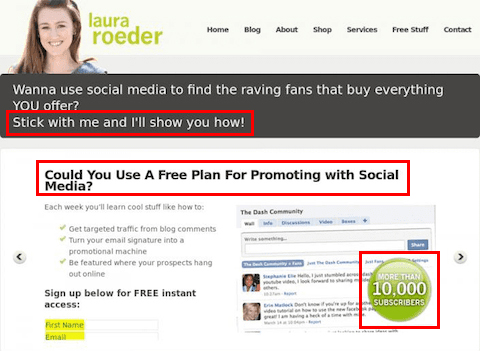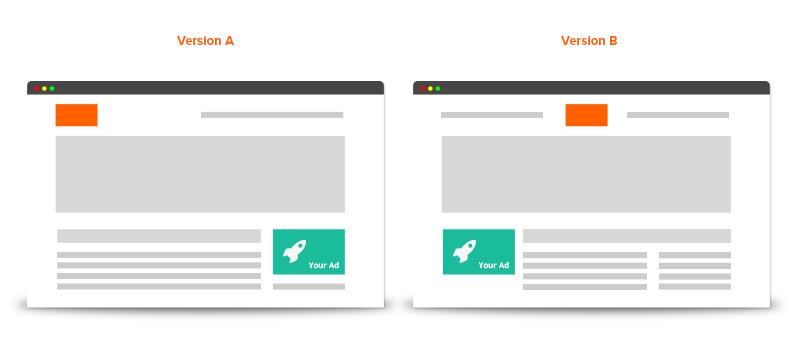Out with the old, in with the new — 2015 has just kicked off, and that means a whole new year of new trends in the small business world. Today's technology is becoming more powerful and affordable than ever. With this continued growth of the internet, new ideas are always being capitalized on by businesses.
Choosing the proper idea for your business will depend on the type of business you own, your available resources, and how much money, time and resources you're willing to invest all over again. Testing new ideas could significantly grow your business.
If you’re a marketer, you’re undoubtedly looking for ideas to optimize your website for better conversions. The conversion rate of a website is the most important measurement that you should improve when doing an online business venture. Wikipedia defines the improvement of conversion rate optimization as “the method of creating an experience for a website or landing page visitor with the goal of increasing the percentage of visitors that convert into customers”.

Conversion rate optimization (CRO) is an integral component to any website optimization strategy, taking the efforts of SEO and PPC advertising one step further. The obvious reason to improve your conversion rate is that you want more customers without having to spend a penny more on advertising. So, if you’re getting a lot of traffic to your website or a specific landing page, it means it’s time to get serious about conversion rate optimization (CRO).
At its most fundamental, CRO increases the percentage of website visitors who experience the “aha moment” (or the must-have user experience) that turns passive browsers into valuable conversions. Sometimes this involves making your call-to-action more apparent or placing it on a traffic-heavy (but under-optimized) page. At other times this means removing or relocating unnecessarily complicated or time-consuming steps from your conversion funnel, as the added friction can prevent a conversion from ever happening.
This guide will help you build your own testing and optimization plan. You will find information that will help you improve the performance of your website using the scientific method for developing and testing valid experiments, and then implementing the successful results.
Gathering Insights
When it comes to constructing a conversion rate optimization plan, the first step is establishing a baseline by measuring the current rate of conversation. A conversion rate is the percentage of users who take a desired action, and to calculate this rate, you will need to implement website tracking so that it collect the data that you will need.
To complete this process, you must have access to your website source code, be comfortable editing HTML, and have a Google Analytics account (read more about web analytics). To start tracking users that visit your site, sign in to your Google Analytics account, copy the snippet code, and paste it immediately before the closing tag into every page you want to track.

Your Google Analytics account is actually now set up and will start tracking data in the next 24 hours. Dig deep into your analytics data to learn what your visitors are doing, focusing on bounce rate, exit pages, time on site and conversion by page. A website's bounce rate, for example, is a metric that indicates the percentage of people who land on a web page and then leave without clicking anywhere else on the website. Bounces are always one page sessions and high rate can be indicative of a number of things but usually it is either acquiring the wrong kind of traffic to the page, or an indication that the page is not compelling.
Exit rate is different from bounce rate. Exit rates is the percentage of people leaving your site from a certain page. Exits may have viewed more than one page in a session which means they may not have landed on that page, but simply found their way to it through site navigation. Never make any analysis based off of one single metric or one statistic though. Stay focused to the big picture when analyzing the data.
After examining your current website’s metrics, calculate the website’s conversion rate by simply dividing the number of conversions by the number of total visits from your target market. Depending on what you're counting, a good conversion rate is usually in the 2–10% range. Conversion rates, however, are influenced by many factors. For example, let’s say your site sells $100 digital cameras for photographers and another site features $2,000 professional digital cameras -– odds are that the two sites will have significantly different conversion rates due to the price of their products alone.
Make sure to evaluate your website’s analytics before you begin testing ideas so that you can monitor how your website’s performance is changing with time. Measure and document your website’s current metrics over a few weeks prior to making any changes. After making the changes, all the rates should be checked again.
Forming a Hypothesis
After conducting an audit of your web site and collecting data, begin to identify problems in your website that are making conversations difficult. Propose a solution to these problems and structure a hypothesis with an action/reaction statement. A hypothesis defines why you believe a problem occurs, and helps you come up with testing variations that give meaningful results.

A strong hypothesis is both testable and a learning opportunity, regardless of outcome; it is not a guess or a hunch. Base hypotheses on your understanding of visitors and their needs, intentions and experiences, and develop a number of these hypotheses that offer suggestions for each issue.
Creating a good hypothesis is very important in conversion optimization, otherwise you’ll be testing random stuff blindly, and are unlikely to get good results. Once we have the hypothesis, we have to test the hypothesis to prove or disprove it.
A/B TESTING is NOT Rocket Science
Based on your hypothesis, you can now start building an optimization plan by running controlled tests and evaluating the results. The scientific method applied to the testing of websites is known as A/B testing (also called split testing). It’s not as complicated as you may think–and here’s how it is used: Conversion rate optimization strategists use A/B split tests to compare two versions of a website and see which one performs better.

An A/B test involves testing two versions of a web page — an A version (the control) and a B version (the variation) — with live traffic and measuring the effect each version has on your conversion rate. Split testing allows you to test things like different designs, colors, images, headlines, written content, and navigational options.
Before you begin split testing, prioritize experiments based on their impact on your business and how quickly and easily they can be run. Whenever possible, start with issues that are low-hanging fruit, aiming on areas that will have the biggest impact on their goals and prioritizing efforts on areas that are the easiest to make changes to. For example, this involves removing or relocating unnecessarily complicated or time-consuming steps from your conversion funnel, as the added friction can prevent a conversion from ever happening.
Your choice of what to test will obviously depend on your goals. Even though every A/B test is unique, certain elements are usually tested:
Headlines
Sub headlines
Paragraph text
Testimonials
Call to action text
Call to action button
Links
Images
Content near the fold
Social proof
Media mentions
Awards and badges
The results from each variation are compared to determine which version showed the greatest improvement. Within webpages, nearly every element can be changed for a split test.
“…knowing is half the battle.”
A/B testing is worthless if you do not implement what you learn. Now that you have the winning version of your web page, it’s time to optimize it. Start by creating a spreadsheet where you record the tests performed, results, and confirmed decisions. For example, if the navigation menu with less links reduces bounce rate, then you can conclude that the increase in number of links in the navigation menu is one of the factors that reduces bounce.
If this hypothesis was correct and your test was a success, then great! Now, you can either cross this concern off your list and move on to the next one or continue refining and re-testing the page, optimizing it as much as possible. But what if your hypothesis wasn’t correct? Don’t be discouraged.
All this means is that it’s time to go back, reexamine the data, and design a new test. So review your analytics and user survey data with this in mind to see if you can gain new insights. You learn as much from a negative outcome as you do from a positive outcome.
Remember, a lot of A/B test will fail but you can learn just as much—or more—from a failed test as you can from a successful one, as long as you understand that the resulting data is an opportunity.
Today, conversion optimization is a vast science, an entire industry unto itself. It’s critically important to the success of Internet marketing as a whole, and essential to the individual success of businesses and organizations who rely on Internet marketing. Conversion optimization is not a one-and-done approach. It consists of always doing research, testing, analyzing, implementing, and going back and formulating new optimization ideas.

